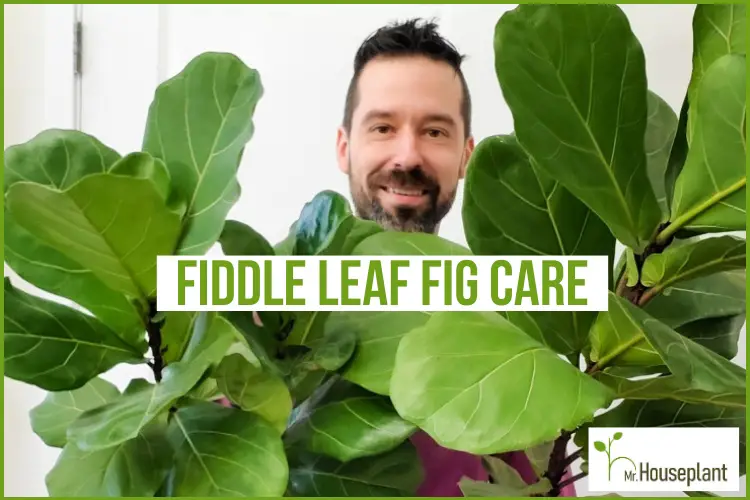
Fiddle Leaf Fig, also known as Ficus lyrata, is a very finicky plant to care for. Native to rainforests and tropical parts of Africa, where it thrives in hot and wet conditions, it can be a challenging plant to care for. Although they are fairly tough plants that can bear and even thrive in less-than-perfect conditions, they still tend to develop brown spots or drop leaves, which can be very frustrating, especially if you’re a beginner houseplant parent.
The cold, hard truth is — Fiddle Leaf Fig is not a houseplant you want to begin your houseplant growing experience with.
I don’t recommend it to:
- Beginner houseplant growers
- If you don’t have a lot of direct light
- And if you’re not ready to get artificial lights
Having some houseplant experience, lots of light, or adding artificial light are preferable requirements to keep these beautiful and popular, but sometimes hard-to-please houseplants alive and healthy.
| Botanical Name: | Ficus Lyrata |
| Common Name: | Fiddle Leaf Fig |
| Light: | full sun |
| Watering: | once soil dries out to the bottom of the pot |
| Soil: | well-draining mix |
| Repotting: | Once a year |
| Fertilizing: | Once every other watering with a high nitrogen fertilizer |
| Temperature: | between 55F and 95F (13C and 35C) |
| Humidity: | optimal 25% to 50%, but grows well in any humidity |
| Fertilizing: | Every other watering with a nitrogen high fertilizer if it’s actively growing |
| Toxicity for Pets: | Toxic to cats and dogs (oral irritation, vomiting, difficulty swallowing) |
| Toxicity for Humans: | Toxic to humans (rash or skin irritation from sap) |
| Propagation: | 1) division 2) stem cuttings in water 3) stem cuttings in soil 4) air layering |
| Pruning: | prune dead or diseased growth or when you want the plant to branch out |
Light Requirements
| Minimal amount of light: | 5,000 lux (500 FC) |
| Optimal amount of light: | 40,000+ lux (4,000+ FC) |
| Direct sun tolerance: | 8 hours |
| Category: | Full sun |
Fiddle Leaf Fig enjoys a high amount of light — bright indirect light to full sun (direct sun for most of the day). However, they need to be gradually adjusted to it; otherwise, the leaves may burn. So, patience! Direct sun makes around 40,000-100,000 lux of light (roughly 4,000-10,000 foot candles), but if you can provide an average of over 5,000 lux, your fig plant should be ok.
Since it has bright light requirements, this plant needs to be positioned in front of your largest and brightest, non-obstructed window; no close buildings or trees should get in the way of the plant’s view of the sky.
Have in mind that the larger Fiddle Leaf Figs get, the more light they need. Also, the more leaves Ficus Lyrata develops, the more light it’ll need to support the existing leaves and grow new ones.
In case there isn’t enough natural light, buy grow lights. If you worry about them increasing your electricity bill, use my LED Grow Light Calculator to quickly find out, and if unsure which grow light to buy, try out my Grow Light Finder.
Check out the video for my Fiddle Leaf Fid care advices:
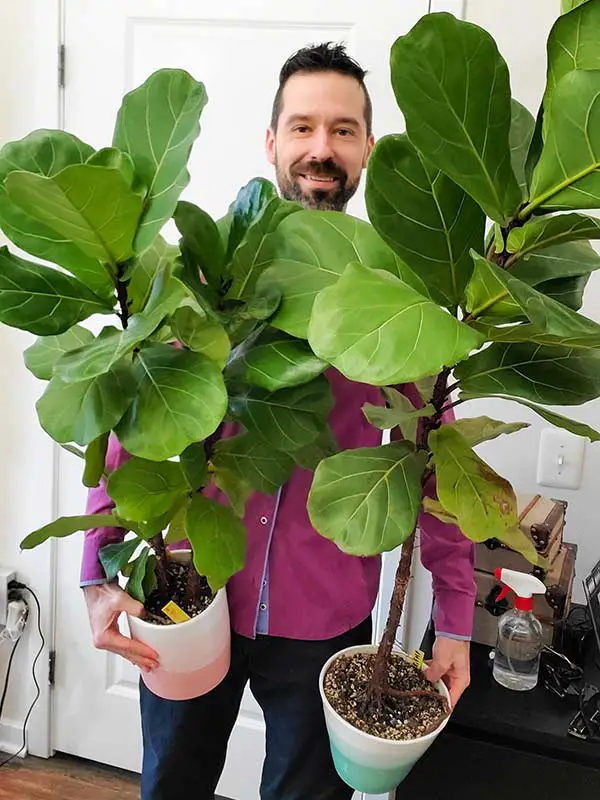
How Do I Know If My Fiddle Leaf Fig Is Getting Enough Light?
If you don’t have a light meter, I highly suggest you get one. It’s a must-have tool for any new houseplant parent and this is the only way to know for sure whether your plants are getting enough light. Everything else is an educated guess. If your plant is getting over 5,000 lux, it’s getting enough light.
If you don’t have a light meter, if your plant is in front of the brightest window with an unobstructed view of the sky, if it’s actively growing and not dropping leaves, it’s most likely getting enough light.
Anything from dropping lower and interior leaves to slow growth can mean your Fiddle Leaf Fig plant is suffering from the lack of light. Also, if you notice your plant leaning toward the source of light, you can be sure that it clearly communicates — I need more light!
Water Needs
The more light your Fiddle Leaf Fig enjoys, the more water it will need. But don’t worry, and certainly don’t exaggerate with watering because these plants can tolerate staying dry for a while. The best way to know when your Fiddle Leaf Fig is ready for another thorough watering is to check the plant’s soil because it likes to dry out between the waterings.
Water your Fiddle Leaf Fig once the soil has fully dried out, all the way to the bottom of the pot. Don’t rush with the next watering schedule, they can tolerate staying dry for a while. And when they get really thirsty, usually the leaves will get droopy. You can use a chopstick to check the dryness of the soil. Put it all the way down and if it comes out dry, it’s time to water it.
Some Fiddle Leaf Fig growers recommend that the top 2 to 3 inches of the soil should be dried out for the next watering; this can be fine for some people, depending on their potting mix and amount of light, but for a lot of people it’s too soon. To be on the safe side, let the soil dry out completely. If your plant receives large amounts of light, feel free to thoroughly soak the soil once it’s dried out completely.
Make sure the planter your plant is in has a drainage hole that ensures you don’t overwater the plant. It is possible to grow it in a pot without drainage holes, but since it requires you to be careful with the frequency of watering and amount of water, I don’t recommend it for beginners. Water in a circular motion around the plant, making sure water covers all areas of soil and reaches all parts of the root system. Stop when you see water dripping from the drainage hole.
Then scratch the surface and check the soil an inch below the top. If the soil is dry, you should water fiddle leaf figs again and again until the soil is fully saturated.
Always spill excess water from the saucer. One reason is, you don’t want your plants sitting in water. That can be fine in a lot of cases, but in some cases, if you consistently let your plant sit in a large amount of water, it can promote root rot. The other reason to empty the saucer is to remove excess salts that are present in that water. Accumulation of excess salts in the soil can burn roots over time.
I recommend not letting the plant’s soil stay wet for longer than a week, to reduce the chances of root rot. If it does, increase the amount of light or reduce the amount of water when watering.
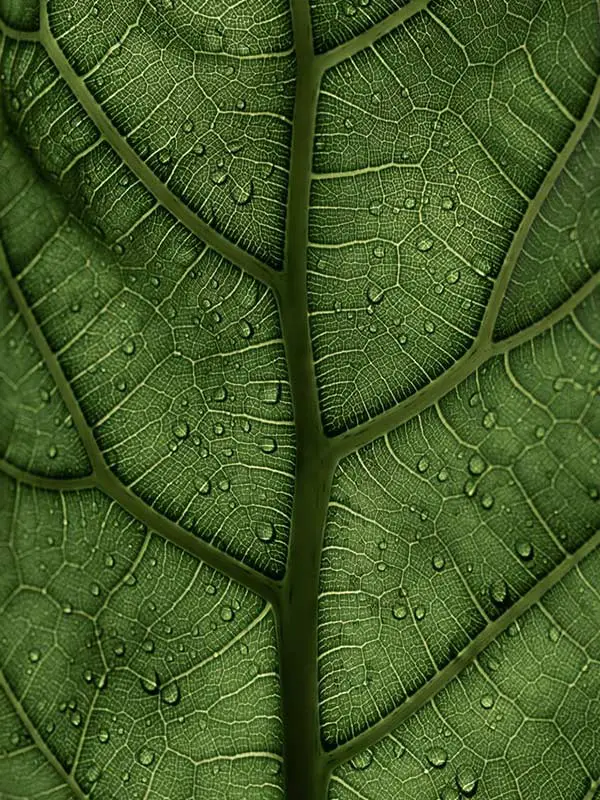
Photo source: Clay Banks, Unsplash
How Will You Know Your Fiddle Leaf Fig Doesn’t Receive Enough Water?
It’s easy to notice. If the soil was left dry for too long, the plant will get droopy.
How Will You Know if Your Fiddle Leaf Fig is Overwatered?
Overwatering a Fiddle Leaf Fig can be very dangerous as it may cause root rot and eventually kill the plant. If a plant is dropping its leaves, it’s very likely that it’s being overwatered.
Humidity Needs
Optimal humidity for Fiddle Leaf Figs is between 25% and 50%. But they adapt well to any humidity.
Temperature Requirements
If you want to ensure the best possible conditions for your Fiddle Leaf Fig, aim for a temperature between 55 and 95 degrees Fahrenheit (13 to 35 Celsius).
Soil
When choosing the right kind of soil for your Fiddle Leaf Fig, the top priority should be its well-draining quality. When potting or repotting this plant, feel free to use any commercial mix and add 30 to 50% perlite, bark, pumice, or another amendment.
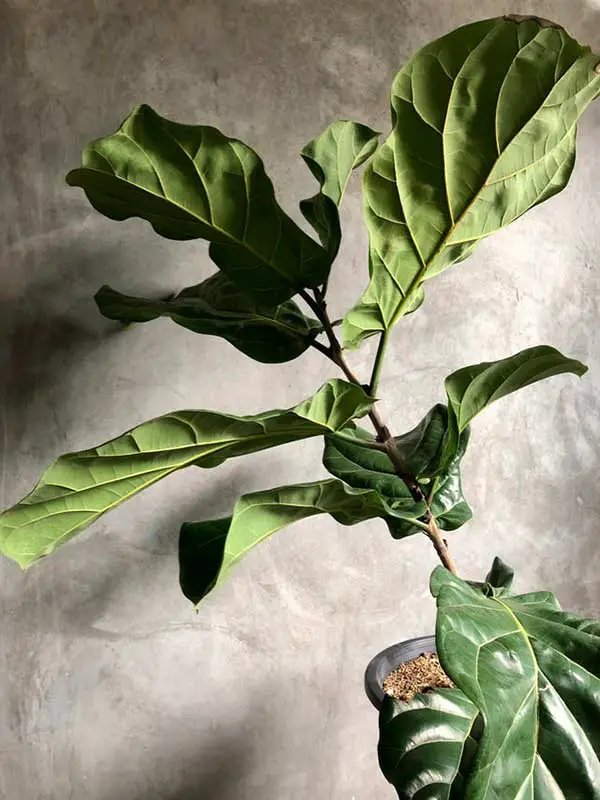
Image source: Joash Castro, Unsplash
This kind of soil mix ensures roots don’t stay moist for too long, more than the plant needs, and rot, and it provides oxygen for the roots.
Repotting
Like with most indoor plants, I recommend a full Fiddle Leaf Fig repot using fresh potting soil once a year. Annual repotting enables your plant to get fresh nutrients and more oxygen from the new soil mix.
Before repotting, wait until the soil dries out. This way, it will be easier to take the plant out of the pot.
If the Fiddle Leaf Fig is not root-bound and still has room to grow, feel free to use the same pot and just add fresh soil.
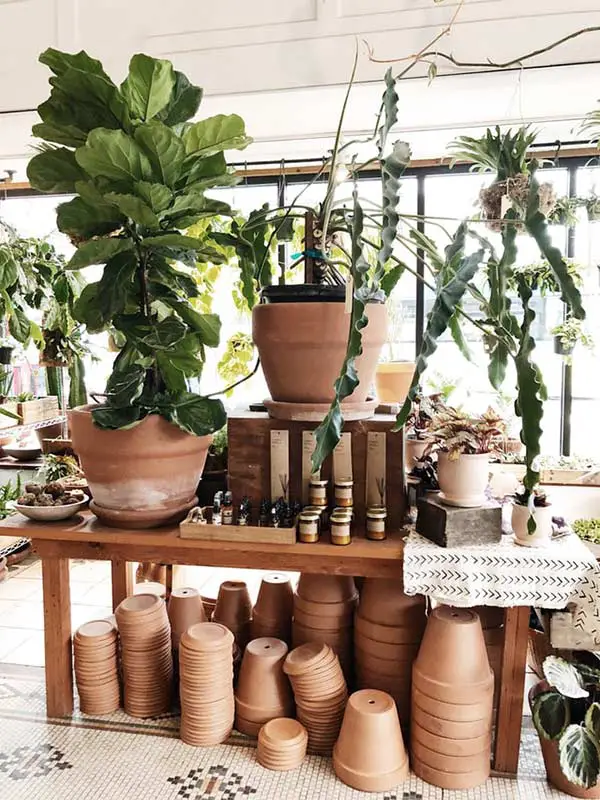
Photo source: Fen Ivanova, Unsplash
However, if roots are coming out through the drainage holes or curl up at the soil surface, it’s time to get a larger pot, ideally the next pot size that is 2 inches wider than the current pot. Don’t go with a pot that is way larger because it will contain too much soil, which would take a long time to dry out, and can slowly lead to root rot.
Again, it’s best to use pots with drainage holes.
After repotting your Fiddle Leaf Fig, water it to allow the soil to settle and get in contact with the roots. Then place it in its old spot if it’s bright enough as these plants generally don’t like changes. But if there is another spot that provides more light, now is the time to move it and let it adjust.
Check out the video about Fiddle Leaf Fig repotting:
For more details on repotting and difference between a full repot and potting up, read my instructions on How to Repot a Houseplant (Properly).
Fertilizing
When your Fiddle Leaf Fig gets adequate light, it will use up water and soil nutrients faster. It is easy to replenish the water, but nutrients need to be replenished by repotting annually or fertilizing.
If you repot houseplants annually, you don’t need to fertilize them. You can, but you don’t need to.
If you want your Fiddle Leaf Fig to grow well and stay healthy over the long term, you should fertilize it during the growing season according to the instructions on the product label. If your houseplant is growing during winter, it is fine to fertilize it then as well.
I recommend using a 3:1:2 fertilizer such as the Sill fertilizer. Make sure to follow label instructions on the packaging for dilution and administration.
There are also Fiddle Leaf Fig-specialized fertilizers but it is not necessary to use them.
Toxicity To Pets
Fiddle Leaf Fig is toxic to cats and dogs if ingested. It contains calcium oxalates which can cause oral irritation, vomiting, and difficulty swallowing, according to the American Society for the Prevention of Cruelty to Animals (ASPCA). If you suspect your pet may have ingested a toxic substance, contact your local veterinarian as soon as possible.
Toxicity To Humans
Ficus Lyrata can cause dermatitis. The sap from the plant may cause a skin rash or irritation, according to the University of California Division of Agriculture and Natural Resources. If you get the sap on your skin, wash the affected area with soap and water as soon as possible after contact.
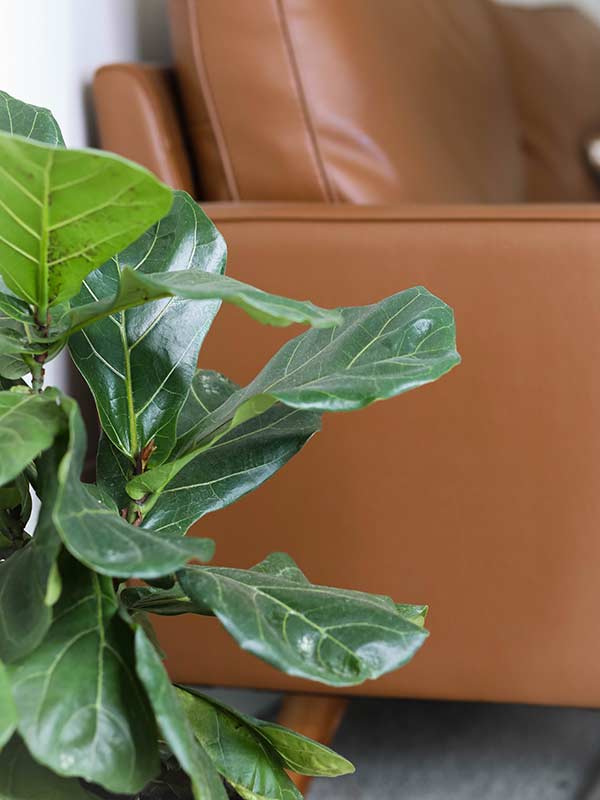
Photo source: Kadarius Seegars, Unsplash
Pruning
Pruning a Fiddle Leaf Fig helps to encourage bushier growth and maintain the overall shape of the plant, as well as remove diseased parts of the plant. Pruning can be done any time of the year. When pruning, use clean, sharp, sterilized shears to make a clean cut. Be careful not to remove too much of the plant at once as this can shock the plant and cause it to stop growing. Regular pruning will help to keep your Fiddle Leaf Fig healthy and looking its best. For detailed information on how to prune a fiddle leaf fig, check out the detailed blog post on the topic.
Propagation
Fiddle leaf fig propagation is a great way to expand your collection of plants. There are several ways to propagate a Fiddle Leaf Fig: division, stem cutting propagation in water, stem cutting propagation in soil and air layering.
Fiddle leaf fig propagation through a stem cutting in water is easy. Take a cutting off of the stem of your fiddle leaf fig tree, making sure it has at least four nodes. Submerge the cutting in water and make sure the nodes are in water. Place the cutting in bright indirect light and leave it in the water until the roots start to form. This can take anywhere from a few days to a few weeks. Once the roots have formed, you can then pot the cutting in soil and water it regularly. With some time and patience, your cutting will grow into a full-fledged fiddle leaf fig tree.
Check out how to propagate your Ficus Lyrata:
Air Layering
Air layering is a process in which the stem of the plant is wounded and then covered with a rooting medium such as sphagnum moss or soil. To air layer, carefully make a shallow cut into the stem of the tree and then wrap the rooting medium around the cut. Keep the medium moist and keep the plant in bright indirect light and in a few weeks, you should see the development of roots. Once the roots are established, the stem can be cut from the parent tree and planted in its own pot to produce a new fiddle leaf fig.
Division
To propagate a Ficus Lyrata through division, you need to have 2 or more plants in the pot. Start by carefully removing the plant from its pot and gently separating the root ball. Plant each division in its own pot filled with well-draining soil and water thoroughly. Place the newly potted divisions in a bright, indirect light location and allow the soil to dry out between waterings. With proper care, your divisions should begin to show new growth in a few weeks.
Pests
Fiddle Leaf Figs, like many other houseplants, are susceptible to pests such as spider mites, fungus gnats, mealybugs, thrips, and scale insects. These pests can cause damage to the leaves and branches, and if left untreated, can lead to the plant’s death. To prevent and control pests, it’s important to regularly inspect your Fiddle Leaf Fig for signs of infestation and act quickly if any are found. For detailed information on all Fiddle Leaf Fig pests and how to get rid of them, check out the linked article.
Can You Propagate Fiddle Leaf Fig Leaves?
Fiddle Leaf Figs are fairly easy to propagate.
You can propagate Fiddle Leaf Figs in multiple ways – through stem cuttings in water or soil or by air layering.
You cannot propagate them through single leaves. A single leaf will grow roots, and it can survive and grow roots for months, even years. But since it doesn’t have a but, it can never grow new leaves.
To propagate your Fiddle Leaf Fig by stem cuttings, cut a healthy stem. Actually, I suggest you take multiple cuttings, as some of them may not survive, even if you do everything perfectly. Put the leaf in water, and give it as much light as possible; ideally, put it in bright, indirect light. Replace water weekly, or as soon as it gets dirty. The leaf will root in water and create a new, self-sustaining plant after about a month. The amount of time it takes for the cuttings to root will depend on a lot of factors – light, water temperature, oxygen in water…for some people roots might grow in a few weeks, for others in a few months. Then you’ll have a brand new plant baby ready and big enough for potting into the soil.
FAQ on Fiddle Leaf Fig
Why Is My Fiddle Leaf Fig Growing Roots Above Soil
The roots growing above soil on your Fiddle Leaf Fig can be either aerial roots or soil roots which can sometimes grow above soil. Both are normal. If your plant is growing soil roots above the soil line, it might be time to repot your plant. If it’s growing aerial roots, you can guide them into soil, or cut them off if you don’t like their look.
It’s normal for many plants, including Ficus Lyrata to grow aerial roots. If you would like a detailed article on aerial roots, check out the previous link.
Good Luck with Your New Fiddle Leaf Fig Tree!
Despite its popularity, this plant is not the easiest to care for, as you can see. However, once you get to know your plant and put to practice all the instructions I provided in this guide, I’m sure you’ll enjoy caring for your Fiddle Leaf Fig.
Let me know how it goes and don’t hesitate to contact me with any questions.
Yours Truly,

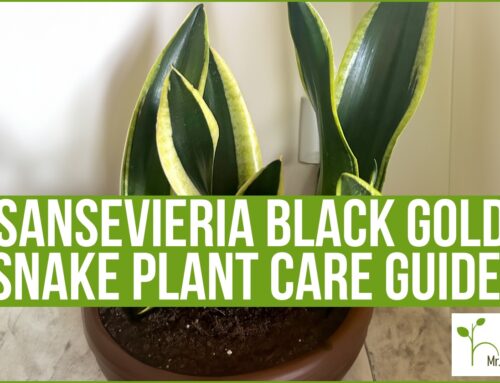

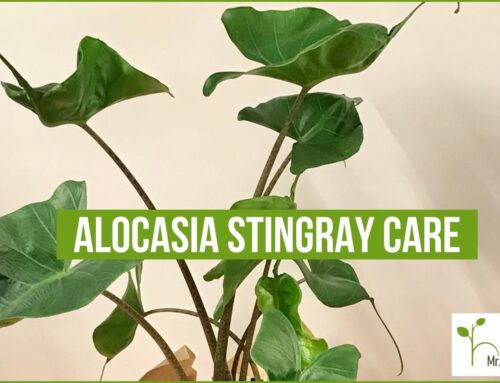


Great advice. Thank you.
Thank you so much Liz. Let me know if you have any fiddle leaf fig questions
Love all your advise. I’ve been growing Fiddle leaf fig plants for five years now! I’ve decided they are addictive. You buy one then you want another, then you decide you need one more! I now have nine! I have a question about fertilizing. In the past you recommended a fertilizer by Botanicare of some type, I don’t recall the name off hand. But now you recommend The Sill. Can you tell me why you now recommend this fertilizer instead of the previous one you recommended. Does it have more nutrients in it and what kind? If I need to use this fertilizer then I will switch to it but need t know why. Keep up the good work! I follow your site frequently!